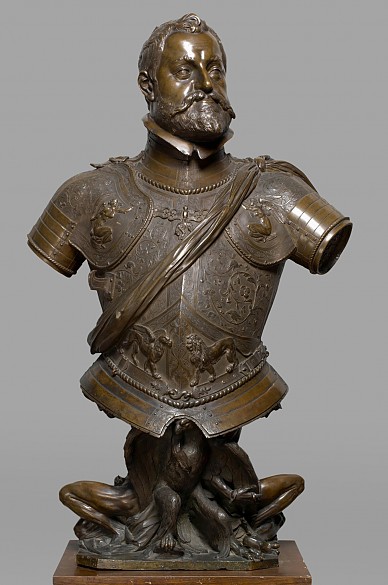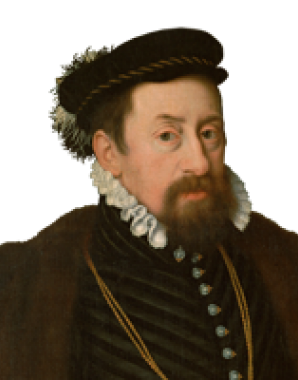Rudolf II and the problems of Habsburg rule
The threat from the expansion of the Ottoman Empire, sectarian conflicts and centrifugal tendencies in the heterogeneous Monarchy dominated Habsburg policy at the turn of the sixteenth and seventeenth centuries.
As ruler over his Central European territories, Rudolf was soon confronted with the differences to the Spanish monarchy. Whereas Spain was a centrally governed state with a clearly regulated succession, Rudolf was here confronted with varied groups of lands constituting a loose association of territories under the rule of a common monarch. The Austrian group of lands and the lands of the Bohemian and Hungarian crowns had differing legal traditions and were very far from being a nation state.
This was even truer of the situation in the Empire: while the emperor was its sovereign, the efforts of the dynasty to unite the electors, who often had diverging religious and political agendas, had hitherto always failed.
It was not only in the Empire but also in some of the Habsburg monarchy lands that Rudolf was merely the formal sovereign with few opportunities for direct intervention. Due to divisions of the dynastic line the western group of lands consisting of Tyrol and the Forelands, as well as the Inner Austrian group since the death of Maximilian II had been ruled by separate lines of the dynasty, while Lower and Upper Austria were ruled more or less independently by Rudolf’s brothers as governors with extensive rights. Thus Rudolf ruled directly only in Bohemia and Hungary.
Hungary, or rather, the third of the medieval kingdom that was under Habsburg rule, was constantly under threat from Turkish invasion. Phases of relative calm were followed by campaigns of conquest that demanded heightened defensive measures from the Habsburg rulers. Wary of the enormous Ottoman strike capability, the Habsburgs pursued a passive rather than active military strategy.
The young and ambitious Rudolf initially decided on a policy of attack, keen to secure himself fame as the ‘defender of Christendom’. He gave birth to the rather far-fetched plan of creating an alliance of the Christian rulers of Eastern Europe under imperial leadership. In 1591 an offensive was launched against the Ottomans, with pro-Habsburg propaganda prating about a new crusade. The so-called Long Turkish War dragged on for fifteen years but did not result in any decisive changes, leading if anything to the slow erosion of Rudolf’s power in Hungary.
The war with the Turks also exposed a structural problem of the Habsburg Monarchy. The war had been financed only with the cooperation of the Estates of the Austrian and Bohemian lands. However, they opposed the ruling dynasty in matters of religion, as the Reformation had here fallen on fertile soil.
A special situation obtained in Bohemia, where religious pluralism was flourishing. Since the Hussite movement in the fifteenth century very few of the structures of the Catholic Church had remained in place. With the growing influence of the Lutheran Reformation, the Catholics in the Bohemian lands were now a vanishing minority. The defender of religious pluralism was the economically robust and politically confident Bohemian nobility. While the presence of Rudolf in Prague bolstered royal authority, the influence of Spain on the Catholic party together with that of various Lutheran and Calvinist powers in the Protestant camp led to ever-widening sectarian alienation, and the positions on either side became entrenched.













